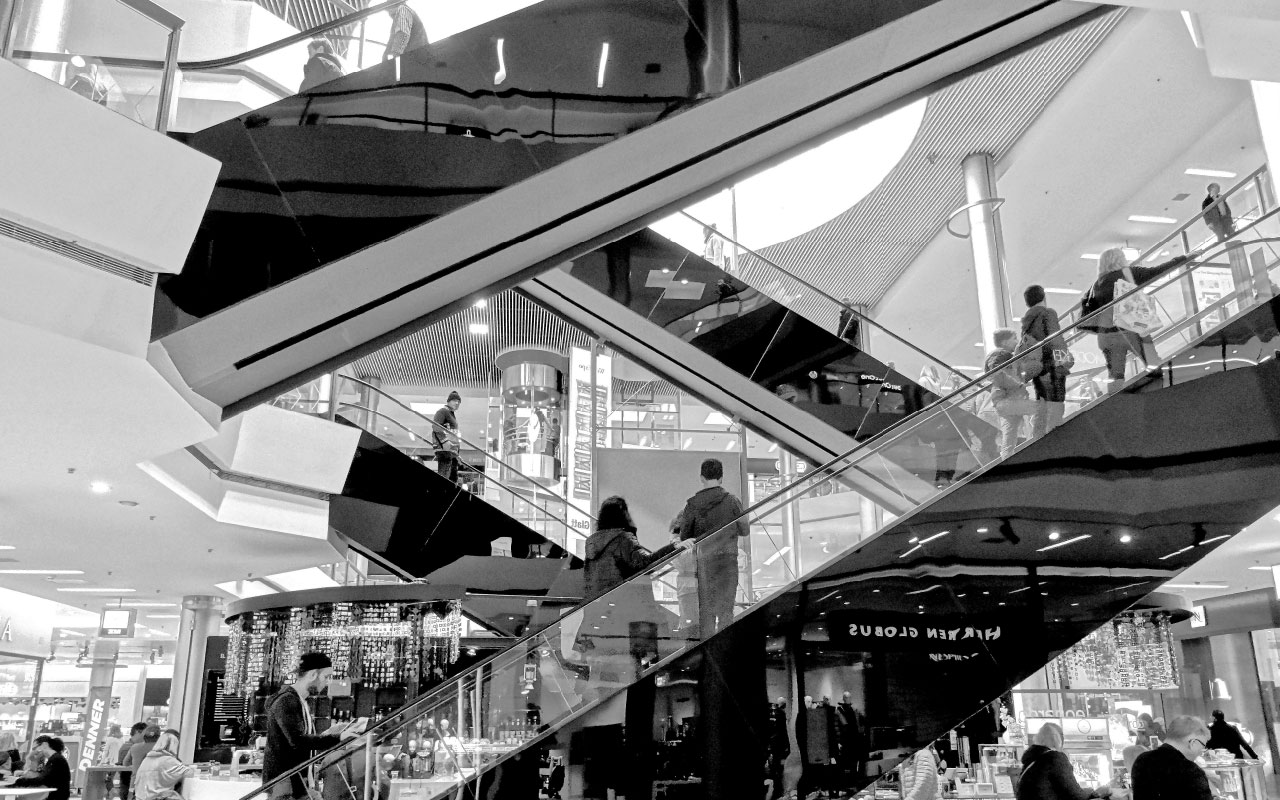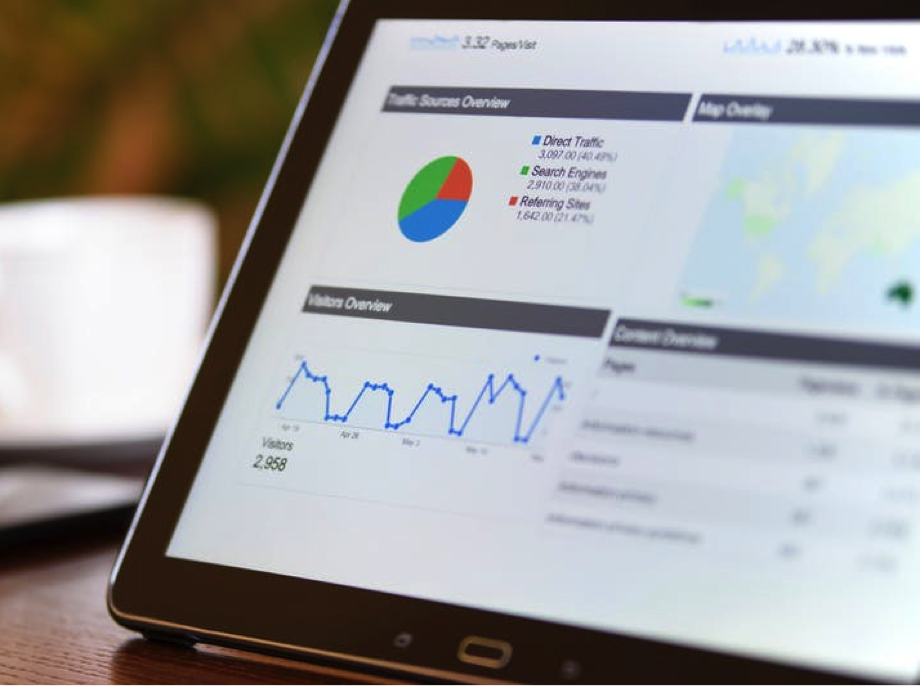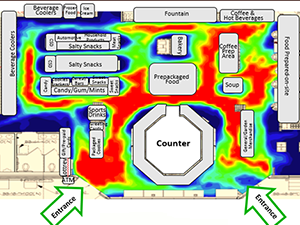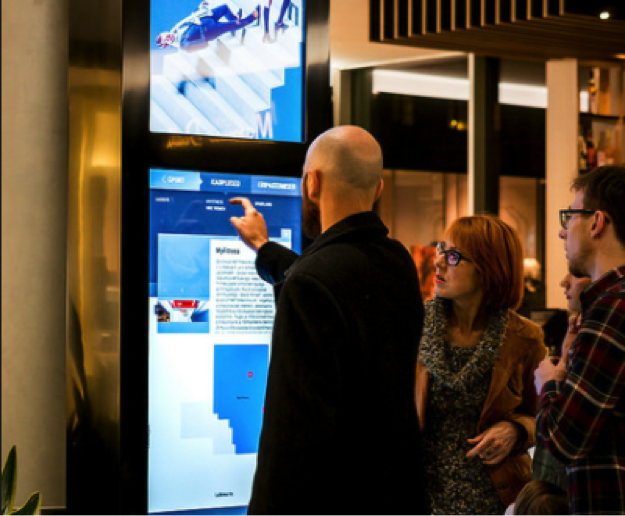IoT Applications in Retail; 5 Real Examples

The Internet of Things (IoT) buzzword that has been hyped all across the maker market for years is continually becoming more visible, not as “IoT” but as business solutions via digital transformation. With online retailers reigning king over brick and mortar retail stores, Mom and Pops are responding with tech to fight back.
IoT solutions are being created and implemented not only by major retailers with millions to spend on proof of concept and software development, but also makers installing insight driven devices for Mom-and-Pop stores all across the world. This blog will highlight 5 actionable IoT solutions in retail we have seen at Ubidots, the benefits they serve, and how device developments are becoming even easier to deploy with application builder platforms that merge the ever-time-consuming hardware/software integration.

1) Beacon Alerts
The first IoT solution on our list is beacon alerts. This alert application uses bluetooth geolocation to provide shopper with potentially valuable information to their smartphones like, “sale in isle 3” or “Uptown is having 40% off anniversary sale.” Connecting with customers is key in all business, and as digital technology permeates the regularity of spoken conversation, beacon alerts have allowed merchants to reach their audience without uttering a word. InMarket’s proof of concept with Rainbow Light, a prenatal vitamin, shows us very telling results. Using beacon advertising the campaign saw a 125% ROAS and an increase in overall sales volume by 15%, dramatically outperforming expectations.
What is a beacon? A beacon is a Bluetooth Low Energy device located at or near a vendor (like inside a store) and is programmed to advertise a product. The beacon (called a slave or a peripheral) will distribute an advertisement, in the form of electrical signals carrying personalized and useful information, to local smartphones and tablets (called masters or centrals) with the intent of marketing a product or service.
Sounds simple enough, but balancing the tradeoffs of speed vs. energy consumption and meshing a technical understanding with the marketing aspirations of business owner can be challenging but fruitful for both the business and the beacon designer. With eventual uses in the tourism industry, beacon alerts provide a wealth of knowledge to shoppers when their buying power is highest, in the store. For more, check out inMarket and their lapse shopper technology.
2) Shopper Mapping

Strategically placed sensors provide valuable insights to shopper mapping and high traffic points within a store. Knowing where and how a customer finds a product is valuable to sales departments, managers, and marketers. With the insights of heat maps and customer trace, retailers can better position items for sale, adjust store setup to eliminate empty space, and record shopping trends over time. Prism Skylabs’ technology uses security camera images to generate a heat map of a shop’s layout and translates that data onto a dashboard for store managers.
For example, the traffic volume of individuals walking by the storefront vs. the number of people who enter the store. This insight paired with the frequency of a shopper making a purchase hugely drives advertising success statistics. Using people counters and location heat maps, a store owner can refine the interior and exterior advertising and appearance to maximize the number of shoppers entering the store and making purchases. As sensors and application development continue to decrease in price, the demand for more insights continues to grow.
3) Customer Relationship Management
Traditionally, customer relationships were built on the foundations of face-to-face conversations. Today, merchandisers are utilizing the IoT to learn from, interact with, and advertise to those who consume their products. Recently in real estate, Centaline has teamed up with Microsoft Hong Kong and TFI Digital Media Limited to make house hunting as efficient as possible. When a home is for sale, an agent can place sensors and upload video from his/her smartphone to use an IoT based cloud app, allowing prospective homebuyers visit homes, wherever and whenever they want. No longer are the days of Sunday open houses.
4) Smart Signage

Smart signage is revolutionizing the way people shop. Physical stores are utilizing digital displays, such as Ipad screens, to display content facilitating the customer. Moving Tactics, a South African fashion retailer, is the leading digital signage solutions company. Research in 2013 confirmed that 41% (almost half!) of shoppers were influenced to make a purchase in-store, based purely upon the advertising on in-store digital screens, and 92% of shoppers interviewed thought that it was a great idea to use screens in-store for customer communication. With the company booming and still making progress, digital signage proves a dramatic success.
Not only does digital signage serve as an attractive and aesthetic advertisement to customers, the system is successful in thinking logically and making rational decisions for the customers, facilitating their shopping endeavors. Digital signage is programmed by accumulating contextual cues and patterns from the customers and establishing connections based on expectations. Using hardware placed in advertising or around stores, software is calculating when customers typically group particular items in the same purchase, the time of year these items are typically purchased, and generates relevant information pointing the customers towards their next possible route or purchase in the store.
5) Smart Shelves
A smart shelf is a shelf equipped with an RFID (Radio Frequency Identification) reader, either built in the shelf itself or installed behind, under, or above normal shelves. This reader scans the tagged items on the shelf and consistently notifies the back-end system about the existing items. By tracking items and their nutritional information, their movements, and whereabouts, the system provides retailers with information that can be analyzed and translated into customer preferences. Kroger, the United State’s largest supermarket chain by revenue (115.35 billion in 2016), is completing the installation 2,200 Edge shelves throughout the center of the supermarket, including most aisles with dry goods. Now, a digital grocery list carried by the customer will ring when the customer is nearby an item on the list, or even more conveniently, a shelf will light up when it knows the customer is nearby and looking for the items that the particular shelf is holding and monitoring.
Smart shelf systems have three components: an RFID tag, an RFID reader, and an antenna. The RFID tags on the goods contain an integrated circuit and a microchip antenna that transmits data to the RFID reader. Information is collected from the tags and then transferred through a communications interface to an IoT platform, where the data can be stored, formatted, and analyzed.
Besides what Kroger’s smart shelves can do, many other implementations around the world have additional functionalities. A strongly interconnected network of sensors can send automatic replenishment alerts (for items out of stock), misplaced item alerts, last scanned alerts (for prevention of theft), expired date notifications, customer interest notifications (how much is the item looked at, picked up, put back, etc), and added product information for customers. RFID-equipped smart shelves provide retailers with various ways of improving their customer service and increasing customer-product interaction.
Brick and Mortar Retail Has a Chance
Implementing IoT solutions provide insights for business owners to both generate more income, and also facilitate patrons and their endeavors when shopping. Business owners and makers are combining knowledge and skill to deliver insights to why and how merchandise is selling.
Typical IoT solutions for retail will consist of devices (sensors, cameras or RFID readers), connectivity (Ethernet, WiFi, Cellular, etc.) and an IoT cloud, where data can be interpreted for decision making. IoT clouds like Ubidots, Azure IoT, and AWS IoT are three IoT cloud platforms capable of this feat. Using these platforms or others, developers and makers are designing the next round of technology offerings to bring knowledge to businesses that convert shoppers into customers.
This content was originally published as a Guest Post by Hardware Massive on August 14th, 2017. Special thanks to Matt Hall and the entire Hardware Massive Community for its continued support and development with Ubidots.com.
